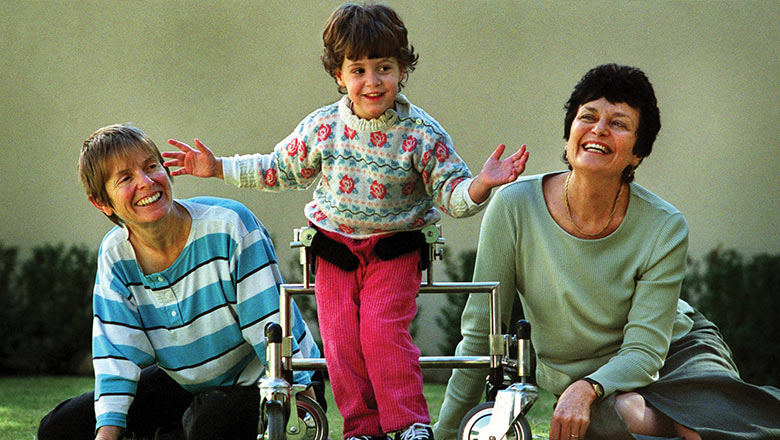Search
Research
‘Feeling like you can't do anything because you don't know where to start’—Parents' Perspectives of Barriers and Facilitators to Accessing Early Detection for Children at Risk of CPEarly detection of cerebral palsy (CP) risk is possible from 12 weeks corrected gestational age (CGA) using standardised assessments; however, up to half of children at risk are not referred early, missing out on early intervention. We investigated the barriers and facilitators to accessing early intervention from the perspective of parents of children who did not receive services by 6 months CGA.
Research
Robust and Interpretable General Movement Assessment Using Fidgety Movement DetectionFidgety movements occur in infants between the age of 9 to 20 weeks post-term, and their absence are a strong indicator that an infant has cerebral palsy. Prechtl's General Movement Assessment method evaluates whether an infant has fidgety movements, but requires a trained expert to conduct it. Timely evaluation facilitates early interventions, and thus computer-based methods have been developed to aid domain experts.
Research
How Well Does the EQ-5D-Y-5L Describe Children With Intellectual Disability?: “There's a Lot More to My Child Than That She Can't Wash or Dress Herself.”The EQ-5D-5L is a generic health utility instrument for measuring health-related quality of life (HRQoL), with self-report and proxy report versions for children (EQ-5D-Y-5L). Children with intellectual disability (ID) are a heterogeneous population whose impairments and comorbidities place them at risk of poor HRQoL. This study aimed to describe the content validity and suitability for children with ID of a proxy report version of the EQ-5D-Y-5L as seen by their caregivers.
Research
ACTIVE STRIDES-CP: Protocol for a randomised trial of intensive rehabilitation (combined intensive gait and cycling training) for children with moderate-to-severe bilateral cerebral palsyFor children with cerebral palsy (CP), who are marginally ambulant, gross motor capacity peaks between 6 and 7 years of age with a subsequent clinical decline, impacting their ability to engage in physical activity. Active Strides-CP is a novel package of physiotherapy targeting body functions, activity and participation outcomes for children with bilateral CP. This study will compare Active Strides-CP to usual care in a multisite randomised waitlist-controlled trial.

News & Events
Changing the focus of cerebral palsyCerebral palsy is not only the result of birth trauma and the lack of oxygen supply during delivery.
Research
Congenital Anomalies in Children With Cerebral Palsy: A Systematic ReviewThis systematic review aimed to address gaps in our understanding of the association between congenital anomalies and cerebral palsy
Research
Construct validity and responsiveness of the functional Tactile Object Recognition Test for children with cerebral palsyThe functional Tactile Object Recognition Test demonstrated preliminary construct validity, and was positively associated with an upper limb activity measure
Research
Kindy Moves: a protocol for establishing the feasibility of an activity-based intervention on goal attainment and motor capacity delivered within an interdisciplinary framework for preschool aged children with cerebral palsyPreschool aged children with cerebral palsy (CP) and like conditions are at risk of performing below their peers in key skill areas of school readiness. Kindy Moves was developed to support school readiness in preschool aged children with CP and like conditions that are dependent on physical assistance and equipment throughout the day. The primary aims are to determine the feasibility of motor-based interventions that are functional and goal directed, adequately dosed and embedded into a play environment with interdisciplinary support to optimise goal-driven outcomes.
Research
The Neurological Hand Deformity Classification: Construct validity, test-retest, and inter-rater reliabilityThe Neurological Hand Deformity Classification (NHDC) is an impairment-based tool that classifies hand deformity into one of two ordinal scales: flexion or extension deformities. Classification is made from live observation or from recorded video footage. Differentiation between the levels is determined by wrist position and wrist and finger movement.
Research
An international survey of cerebral palsy registers and surveillance systemsThese findings will facilitate harmonization of data and collaborative research efforts, which are so necessary on account of the heterogeneity and...
